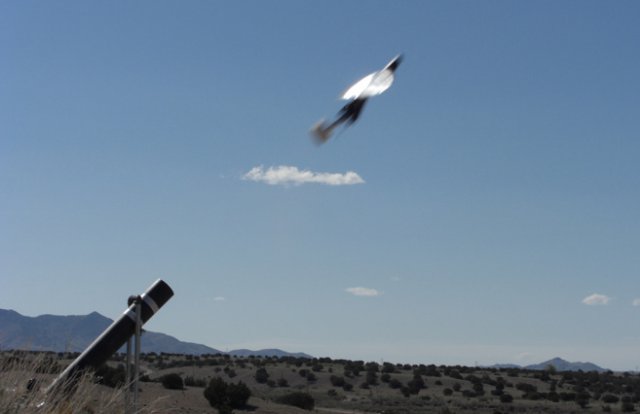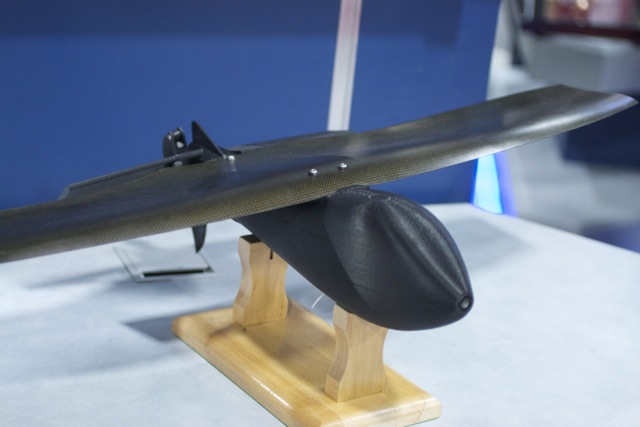Textron Defense Systems unveiled a small UAS with an added special surprise—it’s also a flying hand grenade. Designed to be carried by an infantry squad, the BattleHawk is an approximately five-pound collapsible UAS with an onboard video camera, all packed in a spring-loaded launch tube.
The battery-powered BattleHawk can stay in the air for as long as 30 minutes and can be controlled from up to five kilometers away.
Those characteristics alone don’t match some of the other small-unit surveillance UAS that have been in service for much of the past decade. But that’s because BattleHawk isn’t designed to be a persistent eye in the sky—it’s a “loitering munition.”
The BattleHawk’s real payload is a 40 mm focused-fragmentation charge that arms upon launch and explodes on contact with the target. It’s designed for “soft targets,” a company representative said—people and unarmored vehicles—and the focused charge is intended to reduce “collateral damage” from the exploding UAS.
 So, for example, if a squad comes under fire from a hidden position on a hilltop, it could deploy a BattleHawk to fly up above and behind cover, locate the attacker, and then dive down quietly at about 60 miles an hour for the kill. Alternatively, the BattleHawk can hang out for up to 30 minutes, waiting for the enemy to show themselves, and glide quietly down on them when they do.
So, for example, if a squad comes under fire from a hidden position on a hilltop, it could deploy a BattleHawk to fly up above and behind cover, locate the attacker, and then dive down quietly at about 60 miles an hour for the kill. Alternatively, the BattleHawk can hang out for up to 30 minutes, waiting for the enemy to show themselves, and glide quietly down on them when they do.
Textron hasn’t sold the BattleHawk to anyone yet, but it’s hoping to win a contract to supply the US Army. The company is also marketing a “non-weaponized” version of the drone for pure surveillance purposes; minus the grenade, the unarmed BattleHawk offers extended endurance and can be recovered for reuse.
But Textron may find the going rough. The Army already has a significant inventory of small surveillance UAS, as well as GPS-guided mortar rounds that can be used in coordination with UAS such as AeroVironment’s RQ-11B Raven. The Raven has double the range and endurance of the BattleHawk and has been in service with the Army since 2006. About 20,000 are already deployed.
The BattleHawk also isn’t the first “weaponized” drone. In 2011, the Army started purchases of AeroVironment’s Switchblade, a back-packable armed drone that has a similar range to the Raven—10 km—but an endurance time of only 10 minutes. The Switchblade is also tube-launched, GPS- and video-guided, and it fits in a standard Army ALICE (all-purpose lightweight individual carrying equipment) backpack.
Source: Ars Technica

